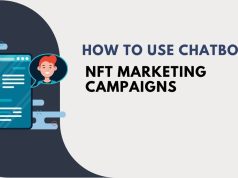In today’s digital hyper-performance marketplace, it is no longer an alternative to create a specific brand-expression-it is necessary to survive. While smooth websites and compelling product photography are still important, further thinking business marks are seeking a powerful new new limit for discrimination: Custom e-commerce bots that authentic the voice and identity of their brand their brand embodied.
These AI-operated digital assistants do more than answer basic questions or guide customers through purchases. When sewn properly, they become a real brand ambassador, who creates persistent, personal experiences such as echoes with customers at each point of touch. A well-adapted e-commerce can express the unique position of the brand personality, values and all the interactions, strengthen the perception of the brand and carry out the average business results.
At BotMarketo, we’ve witnessed firsthand how intelligently crafted e-commerce bots transform customer experiences. This comprehensive guide explores the art and science of customizing e-commerce bots to authentically reflect your brand voice and identity—turning automated interactions into meaningful brand experiences that drive loyalty and conversions.
Why Brand Consistency Matters in E-commerce Bot Design
Brand consistency creates recognition, builds trust, and differentiates your business from competitors. When your customers encounter inconsistent messaging or experiences, it creates cognitive dissonance that can damage brand perception and erode trust.
Research from Lucidpress indicates that consistent brand presentation across all platforms can increase revenue by up to 23%. This principle extends to your e-commerce bots, which often serve as the primary point of contact for online shoppers.
When your bot communicates in a voice that clashes with your established brand identity, it creates a jarring experience that undermines customer confidence. Conversely, a bot that seamlessly extends your brand voice reinforces brand perception and creates a cohesive customer journey from awareness through purchase and beyond.
Learn more in our in-depth guide: Mastering Ecommerce SEO Services for Business Growth to enhance your overall digital strategy alongside customized e-commerce bots.
Understanding Your Brand Voice: The Foundation of Bot Customization
Before you can effectively customize your e-commerce bot, you need crystal clarity on your brand voice. This goes beyond superficial characteristics to the core elements that define how your brand communicates:
Defining Brand Voice Parameters
Personality Attributes: Is your brand playful or serious? Authoritative or friendly? Traditional or disruptive? These fundamental character traits inform every aspect of communication.
Tone Spectrum: Your brand may employ different tones in different situations while maintaining a consistent voice. Map your tone spectrum from casual to formal, enthusiastic to reserved, etc.
Language Preferences: Document specific vocabulary, phrases, and expressions that align with your brand. Also identify language to avoid—terms that clash with your brand identity.
Communication Values: What principles guide your brand’s communication? Transparency? Simplicity? Technical precision? Emotional connection? These values should inform bot interactions.
Conducting a Brand Voice Audit
Before programming your e-commerce bot, audit existing brand communications:
- Gather Content Samples: Collect marketing materials, social media posts, customer service transcripts, and other brand communications.
- Identify Patterns: Look for recurring words, phrases, sentence structures, and tones that define your brand voice.
- Note Inconsistencies: Flag any communications that deviate from your intended brand voice for later refinement.
- Extract Core Elements: Distill your findings into a concise brand voice guide that will inform bot customization.
According to Nielsen Norman Group, establishing a consistent brand voice increases user engagement by up to 32%. This makes your brand voice audit a critical foundation for effective bot customization.
Technical Approaches to E-commerce Bot Customization
With a clear understanding of your brand voice, you can implement various technical approaches to customize your e-commerce bot:
Natural Language Processing (NLP) Customization
Modern e-commerce bots leverage sophisticated NLP capabilities that can be tailored to reflect your brand voice:
Response Templates: Develop a library of branded responses for common scenarios, infusing your unique voice into standard bot interactions.
Sentiment Analysis Calibration: Adjust sentiment analysis parameters to align with your brand’s emotional range and response style.
Entity Recognition Training: Train your bot to recognize and properly respond to industry-specific terms and brand-related entities.
Contextual Understanding: Implement context management that reflects your brand’s communication priorities and values.
Personality Layer Implementation
Beyond basic NLP customization, advanced e-commerce bots can incorporate a personality layer:
Character Definition: Some platforms allow you to define bot personalities with specific traits, conversational styles, and response patterns.
Dialogue Flow Design: Structure conversation flows to mirror how your brand representatives would naturally guide conversations.
Humor and Empathy Calibration: Program appropriate levels of humor, empathy, and emotional intelligence based on your brand personality.
Cultural Alignment: Ensure your bot’s references, examples, and idioms align with your brand’s cultural positioning and target audience.
Creating Brand-Consistent Visual and Interactive Elements
Brand identity extends beyond voice to visual and interactive elements that reinforce brand perception:
Visual Brand Integration
Avatar Design: Create a bot avatar that visually represents your brand identity, whether that’s a mascot, abstract symbol, or human-like representative.
Color Scheme Implementation: Apply your brand colors consistently throughout the bot interface and interactive elements.
Typography Consistency: Maintain font consistency between your bot interface and other brand touchpoints.
UI Component Branding: Customize buttons, input fields, and other UI components to reflect your visual brand language.
Interaction Pattern Alignment
Response Timing: Adjust response speed to match your brand’s pace—immediate for efficiency-focused brands, slightly delayed for thoughtful or premium brands.
Conversation Structure: Design conversation flows that mirror your typical customer interactions, whether direct and transactional or relationship-focused.
Decision Tree Design: Structure decision paths that align with your brand’s approach to customer service and problem-solving.
Transition Handling: Customize how your bot handles topic changes, escalations, and handoffs to human agents in a brand-consistent manner.
Implementing Brand Values Through Bot Functionality
Your e-commerce bot should embody your brand values not just in its communication style, but in its functionality:
Value-Driven Feature Selection
Transparency Implementation: For brands that value transparency, ensure your bot clearly explains its capabilities, limitations, and data usage practices.
Efficiency Optimization: Brands that prioritize efficiency should design bots that minimize steps and provide direct paths to solutions.
Educational Focus: If knowledge-sharing is central to your brand, incorporate informational content and resources into bot interactions.
Relationship Building: Brands focused on community might program bots to remember customer preferences and reference past interactions.
Ethics and Privacy Alignment
Your bot’s approach to ethics and privacy should reflect your brand’s stance:
Data Collection Practices: Align data collection with your brand’s privacy values, being especially mindful for brands that emphasize customer protection.
Disclosure Standards: Determine how transparent your bot will be about its AI nature, following both your brand values and applicable regulations.
Bias Mitigation: Implement robust bias detection and mitigation aligned with your brand’s commitment to fairness and inclusion.
Measuring Success: KPIs for Brand-Aligned Bot Performance
To ensure your customized e-commerce bot effectively represents your brand while driving business results, establish appropriate metrics:
Brand Alignment Metrics
Brand Perception Shifts: Survey customers before and after bot implementation to measure changes in brand perception.
Voice Consistency Scores: Evaluate random bot interactions against your brand voice guidelines to calculate consistency percentages.
Sentiment Analysis: Monitor sentiment in customer responses to bot interactions compared to other brand touchpoints.
Business Impact Metrics
Conversion Rate Impact: Measure changes in conversion rates for bot-assisted transactions compared to non-bot interactions.
Customer Satisfaction: Track satisfaction scores specifically for bot interactions relative to human support.
Average Order Value: Analyze whether bot-assisted purchases show different order values than other channels.
Resolution Efficiency: Measure first-contact resolution rates and time-to-resolution for bot interactions.
According to Gartner, organizations that effectively align their digital touchpoints with their brand identity see a 20% increase in customer satisfaction and a 15% increase in conversion rates on average.
Common Pitfalls in E-commerce Bot Customization
As you customize your e-commerce bot to reflect your brand voice and identity, be aware of these common challenges:
Over-Personification Risks
While personality is important, over-personifying your bot can create uncanny valley effects or set unrealistic expectations. Maintain an appropriate balance between human-like interaction and transparent AI functionality.
Consistency Maintenance Challenges
As your bot learns and adapts, it may drift from your intended brand voice. Implement regular audits and corrections to maintain consistency over time.
Cultural Sensitivity Concerns
Ensure your bot’s personality and responses are culturally appropriate for all market segments you serve, avoiding idioms or references that may not translate well across cultures.
Scalability Considerations
Design your bot customization approach to scale efficiently as you add new products, services, or market segments, avoiding the need for complete redesigns.
Future Trends in Brand-Aligned E-commerce Bots
The landscape of e-commerce bots continues to evolve rapidly, with several emerging trends that will impact brand customization:
Multimodal Brand Expression
Next-generation bots will express brand identity through multiple modalities:
Voice Identity: Custom voice profiles that match your brand persona for voice-based interactions.
Visual Communication: Enhanced ability to share on-brand visual content within conversations.
Interactive Experiences: Immersive, branded mini-experiences embedded within bot conversations.
Emotional Intelligence Enhancement
Advanced emotional intelligence capabilities will allow bots to:
Detect Customer Emotions: Recognize and appropriately respond to customer emotions in a brand-appropriate way.
Adjust Tone Dynamically: Modify communication style based on customer state while maintaining brand consistency.
Build Emotional Connections: Foster authentic emotional relationships that align with your brand values.
Creating Digital Brand Ambassadors
Effectively optimized e-commerce bot more than transaction facilities-they become real digital brand ambassadors who strengthen your market status and create permanent customers. By adjusting values with Bot’s communication style, visual elements, functionality and your established brand identity, you create a consistent and compelling customer experience at all touch points.
As e-commerce develops, brands that improve their identity in these AI-operated interactions will receive significant competitive benefits. Your e-commerce bot represents a powerful opportunity to separate your brand, increase the customer experience and run business results-but only when it symbolizes authentic when it is authentic your unique brand voice and identity.
For more insights on optimizing your e-commerce chatbot strategy, visit BotMarketo and discover how our customized solutions can transform your digital customer experience.
References:









